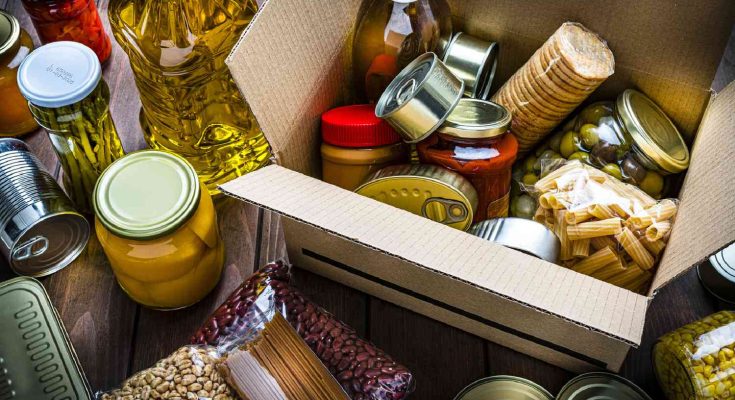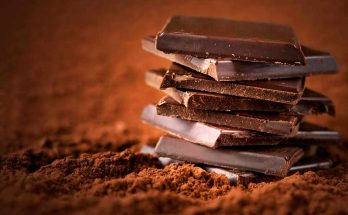Why Canned Beans and Vegetables Should Be Your Besties
Canned beans and vegetables are often underrated in the world of emergency preparedness. However, these pantry staples are not only easy to store but also incredibly versatile and nutritious. Packed with protein and fiber, beans can help you maintain energy during trying times. A single can of black beans contains about 15 grams of protein and a significant amount of dietary fiber, which can assist with digestion and keep you feeling full longer. When you’re cut off from fresh produce and other sources of nutrition, satiety and energy are critical. Furthermore, beans are low-cost, boasting an impressive shelf life of 3–5 years when stored properly.
Canned vegetables, on the flipside, provide essential vitamins and minerals. Options like canned spinach and carrots offer a concentrated dose of nutrients that can keep your immune system functioning optimally. It’s important to check for low-sodium varieties when buying canned options to minimize excessive salt intake during a time when hydration is crucial. The versatility of canned beans and vegetables allows them to be incorporated into soups, stews, or salads, ensuring you don’t get bored with your meals during emergency situations. Whether you’re prepping a hurricane food list or just stockpiling for the future, canned beans and vegetables are both steadfast allies in your pantry.
The Unassuming Power of Canned Fruits: Nutrient-Packed and Delicious
While fresh fruit may be challenging to come by during a hurricane, canned fruits offer a delightful alternative that can brighten up any emergency food supply. They are often packed at peak ripeness, making them a great source of vitamins such as C and A, minerals, and antioxidants. Canned fruits come in various forms peaches, pineapples, pears, and more creating numerous options for consumption. They can be enjoyed on their own, used in recipes, or even dumped into a bowl of cereal for a quick meal. When selecting canned fruits, opt for those packed in water or natural juice instead of syrup; this choice preserves flavor while reducing added sugars.
The convenience of canned fruits extends to their shelf life, which can reach up to 1-2 years if stored correctly. This longevity ensures you have a bit of sweetness on hand when often subjected to less-than-exciting foods during emergency situations. Additionally, the hydration they provide is often enhanced through the juice in which they are packed adds an extra benefit to your diet during stressful times. A well-rounded emergency food kit should never overlook the importance of filling those gaps with nutrient-packed canned fruits.
Hydrating for Survival: The Unsung Hero of Emergency Preparations
Water: The Elixir of Life and Your Most Crucial Resource
In any emergency scenario, especially during a hurricane, potable water is undoubtedly the most critical resource you must have. While most people think about food in their emergency preparations, they often overlook the importance of water until it’s too late. The recommended guideline is to store at least one gallon of water per person per day for at least three days. This figure accounts for drinking as well as sanitation purposes, which can double the amount you need. Proper emergency planning involves not only stashing bottled water but also keeping in mind contamination risks, especially in the aftermath of a hurricane.
To ensure water longevity, consider purchasing water purification tablets or filters, which can add versatility to your resource pool. In addition to storing bottled water, you can utilize clean containers to store tap water if purchasing bottled is a logistical challenge. Remember that plastic bottles can degrade over time, which highlights the need for periodic rotation of your water supply typically every six months to a year to maintain freshness and taste. In an age where water scarcity can arise due to natural disasters exacerbated by climate change, prioritizing water in your emergency plans will serve you well and ensure you remain hydrated and healthy.
Electrolyte Drinks: More Than Just a Thirst Quencher
In addition to plain water, having electrolyte drinks available during hurricane emergencies can make a significant difference in your overall endurance and well-being. These beverages, which contain essential minerals such as sodium, potassium, and magnesium, play a vital role in maintaining fluid balance and muscle function. When you’re sweating or under physical duress such as clearing debris in the aftermath of a natural disaster your body can lose vital electrolytes, leading to fatigue, cramps, and mental fog. Therefore, stocking up with options like oral rehydration solutions or sports drinks can be immensely beneficial.
Moreover, many electrolyte drinks come in convenient powder forms, which can be stored in a compact manner and mixed with water as needed. This space-saving aspect makes them an ideal choice for emergency kits where storage capacity is a consideration. By strategically incorporating these drinks into your hurricane preparedness plan, you’ll not only stay hydrated but also alleviate the discomfort of possible dehydration symptoms, giving you an edge in critical situations.
Smart Snacking: Satisfying Your Cravings in Crisis Mode
Nut Butters: Protein Powerhouses that Last
Nut butters, such as peanut, almond, and sunflower, stand out as powerhouse foods in your emergency food stash. Packed with protein typically about 7-8 grams per serving these spreads not only help to stave off hunger but also provide a healthy dose of fat that can fuel you through challenging days. Their shelf stability is remarkable, with unopened jars often lasting well over a year, making them an ideal meal addition or stand-alone snack during crises.
Beyond their impressive nutritional profile, nut butters serve as a versatile ingredient. They can be spread on crackers, added into oatmeal, or even incorporated into smoothies. Importantly, a single jar can offer countless meal creation opportunities, preventing monotony even when food options are limited. For those who may have allergies or dietary restrictions, there are numerous nut-free alternatives such as sunflower seed butter that provide similar benefits without the risk. Hence, nut butters should earn a prominent spot in your emergency food list, promising both nutritional benefits and culinary flexibility in times of need.
Granola Bars: Convenience Meets Nutrition in a Crunch
Granola bars are a staple in many households, particularly when it comes to emergency preparedness. They offer a quick, convenient, and often delicious option for satisfying hunger, which is essential when time and resources are scarce. Loaded with oats, nuts, seeds, and dried fruit, a single granola bar provides a balanced mix of carbohydrates, healthy fats, and protein, making them superbly energy-dense and a perfect addition to your emergency kit.
Moreover, granola bars often come individually packaged, making them easy to distribute and consume on the go. Whether you need a quick breakfast or a portable snack for evacuating, these bars can fit the bill. Additionally, look for varieties that emphasize whole ingredients and limit added sugars, as this will fuel you without the crash associated with high-sugar snacks. Maintaining good energy levels during an emergency is paramount, and granola bars effectively bridge the gap between nutrition and convenience, making them a must-have in your hurricane food arsenal.
Beyond the Basics: Unconventional Yet Vital Foods to Consider
Freeze-Dried Delights: Gourmet Meals with a Long Shelf Life
When many think of emergency food supplies, they may envision canned goods or pantry staples, yet freeze-dried foods are revolutionizing the way we consider meal options in crisis situations. These foods undergo a process that removes moisture while retaining nutritional value and flavor, allowing meals like beef stroganoff, vegetable soups, or even breakfast omelets to last for years without refrigeration. With an impressive shelf life typically extending beyond 25 years, freeze-dried options provide a highly sustainable solution for long-term storage.
For those concerned about flavor and nutrition, modern freeze-dried meals offer more than just sustenance; they provide comfort food that can evoke memories and foster emotional well-being during turbulent times. In emergency scenarios, the mental aspect of meal enjoyment cannot be underestimated. Many companies prioritize quality, freshness, and taste in their products, allowing you to prepare a meal that feels special even in dire circumstances. Furthermore, lightweight and compact packaging means these meals can easily fit into any bug-out bag, ensuring convenience in evacuation scenarios without sacrificing quality.
Meal Kits: Cooking Made Simple, Even When Power is Out
While cooking may not seem feasible during an emergency due to power outages or limited resources, meal kits can provide a valuable workaround. These kits come with pre-measured ingredients and easy-to-follow instructions, allowing you to prepare satisfying meals without extensive culinary expertise or elaborate setups. In a world where the power might be out for days, there are even meal kits specifically designed for scenario cooking DIY meals that require no power and minimal equipment, such as those cooked over a small camp stove or even a fire pit.
Meal kits, while often seen as a modern convenience, can also serve vital functions in emergency contexts. Their compact and organized nature allows for easy storage and provides a sense of normalcy in chaotic times. Furthermore, by including flavorful and familiar meals in your stockpile, you can reduce anxiety and increase morale. Kits that feature non-perishables, vacuum-sealed proteins, and shelf-stable sides can ensure you have a hot meal ready when you need it the most. By thinking outside of the customary preparations, meal kits bring a restorative element back into mealtime so even during a hurricane’s aftermath, you find a semblance of comfort amidst the chaos.




